Adrien Auclair homepage

Adrien Auclair homepage |
 |
| Input images | Initial 3D Surface (visual hull) | Final 3D Surface |
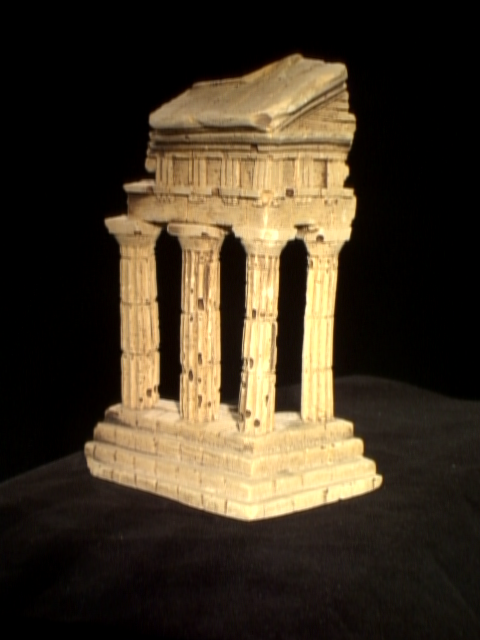  |
 |
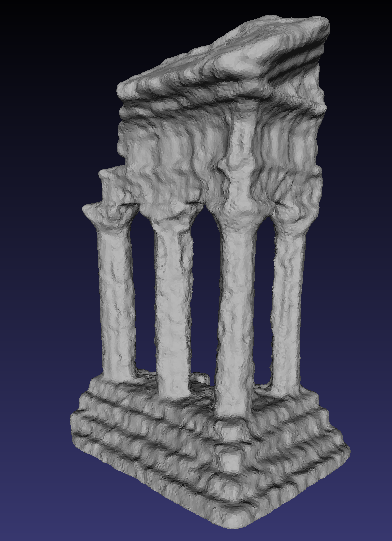 |
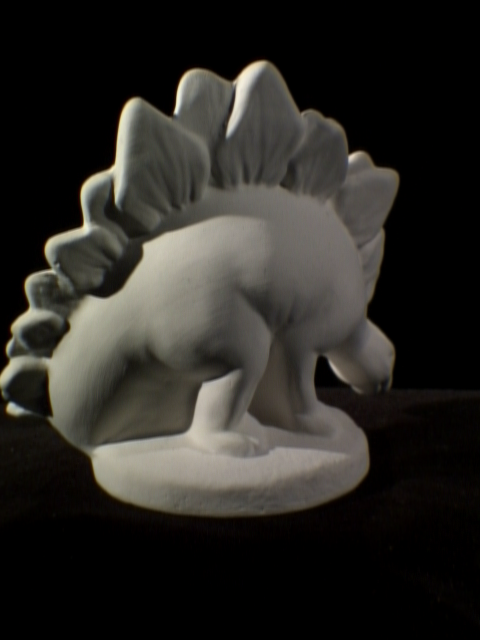  |
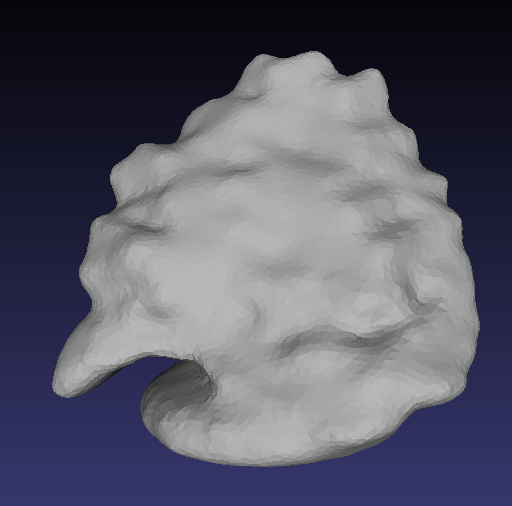 |
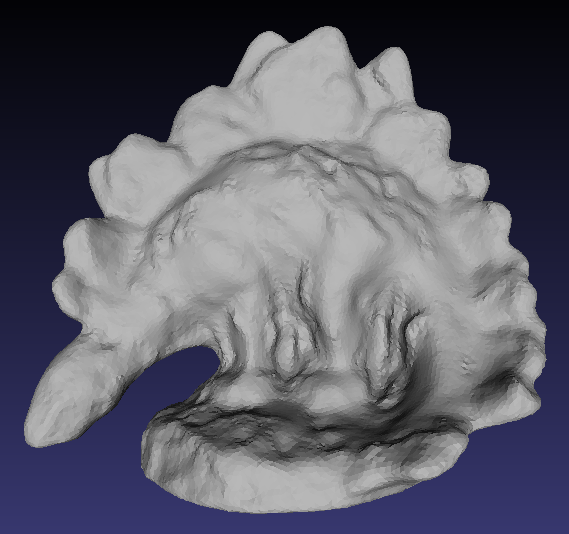 |
| An image of a synthetic movie with some tracked points on it (using a 1D Lucas Kanade points tracker) | The corresponding 3D
car reconstruction (points cloud is triangulated, retroprojected on an empty image with its bounding box) |
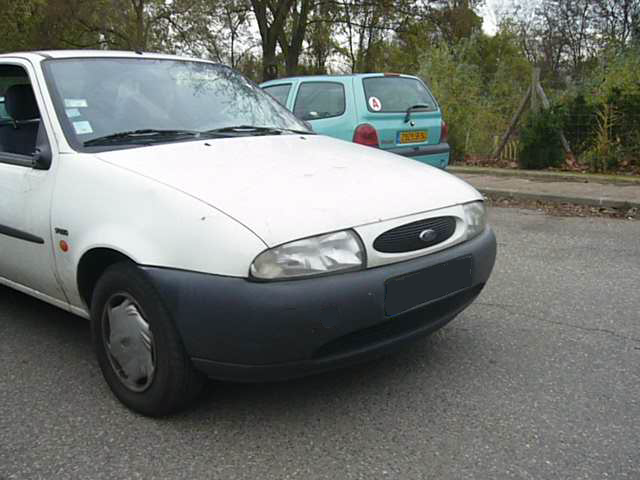 |
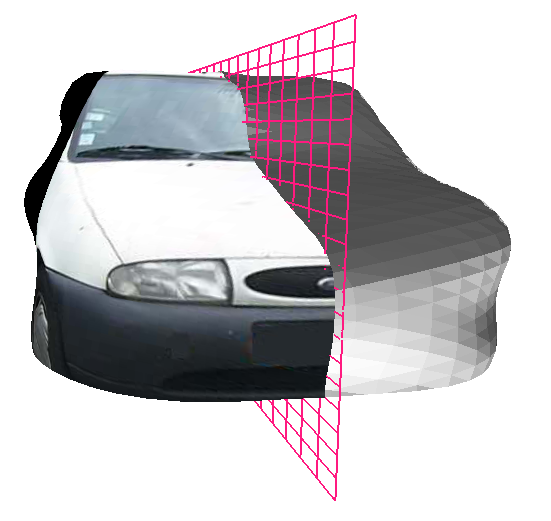 |
| An image from a real video sequence | The 3D car (right part is obtained using symmetry) |
In this project, a 160.000 images database is used. For a query image, one wants to know if the database contains similar images. A potential application is to detect copyright violation. Each search is achieved in less than 10 seconds.
The developed application returns its results as a web page.
Here is an example of result :
| Query Image | Screenshot of the HTML results page |
 |
 |
Images of our database have been grabbed randomely from the internet.
Curiculum vitae ( pdf ) : cv.pdf
|
|
View-point
dependant surface
simplification
|
|
|
Automatic
3d surface segmentation
|
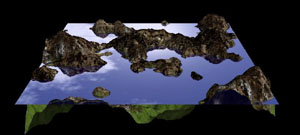 |
Water
effect This program first generates a random terrain. Then it adds water on it. Mountains and sky are reflected. Water is also transparent and pertubated by a wave model. These effects are coded in HLSL. October 2004 [ download ] [ download MFC version ] (Windows) |
|
 |
Terrain
generator This program generates a random terrain, using a perlin noise. Two textures (grass and rocks) are then blended and applied on it, depending on the local elevation. Eventualy, a shadow from the mountains is simulated. (C++ code and VC6 project to download). October 2004 [ download ] (Windows) |
|
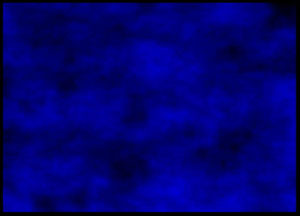 |
Perlin
Noise texture generator perlin noise can be used to generate random soft texture. (C++ code and VC6 project to download) October 2004 [ download ] (Windows) |
|
 |
HLSL Particles system On this example, the room is illuminated by a light that is moving on a circle on the roof. Walls and floor are illuminated, and bump-mapped. On the center of the room is a particle system rendered using point sprites. All effects are done in HLSL. (C++ code and VC6 project to download) September 2004 [ download ] (Windows) |
|
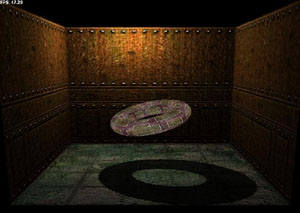 |
HLSL
Shadow map A torus is rotating on itself at the center of the room, with a light moving on the roof. All surfaces are bump-mapped. Then, the shadow of the torus is projected onto the floor. Algorithms are using HLSL. (C++ code and VC6 project to download) September 2004 [ download (exe) (source) ] (Windows) |
|
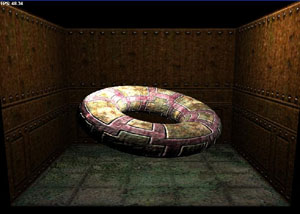 |
HLSL
Bump Mapping A bump mapping example using the programmable pipeline of Direct3D9. Walls and floor are simple to bump-map. For the torus, one need to calculate the tangent space matrix. Algorithms are using HLSL. (C++ code and VC6 project to download) September 2004 [ download (exe) (sources)] (Windows) |
|
 |
Little
2D game |
|
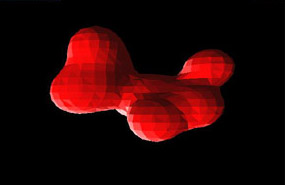 |
Using
the famous marching-cube
algorithm in real time to compute the isosurface of moving potential
sources in 3D. Display is done using openGL. |
|
|
|
Metaballs 2D Old school 2D effect. October 2003 [ download ] (Linux) |
|
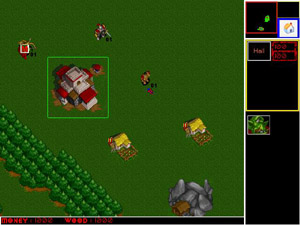 |
Full
real-time wargame (Warcraft-like) The IA allow the user to launch a game against the computer. Units from the computer will defend themselves, rebuild lost building, harvest gold and wood... This is achieved mostly by using final states machines for each unit. The UI allows the user to assign orders to a group of 10 units. Code size is around 15.000 lines in C++. The download has three missions of the game. September - Décember 2002 [ download ] (Windows) |
|
|
A fake normal of a grey image is computed using the
image grey-level. And it is then used for computing a bump-mapping.
|
| Levenberg-Marquardt algorithm | MinPack C++ (BSD license) | levmar (GPL license) | |
| Graphical librarires | OpenGL | DirectX | VTK | Coin3D | |
| User interface libraries | QT | FLTK | |
| geometrical computation libraries | GTS | CGAL | OpenMesh | |
| Coding tools | CVS | Doxygen | Doxbar | KDevelop | NVIDIA tools | |
| 3D models | Stanford repository | The Stanford Bunny | |
| Video games websites | Gamasutra | GameDev | |
| Coding | STL | Design Patterns | Non-Software Examples of Software Design Patterns |
Author
: Adrien
Auclair
email : adrien dot auclair at
gmail dot com
Last update : 06/01/2008